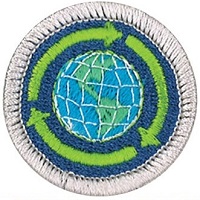Sustainability Videos and Questions
Water
Develop and implement a plan that attempts to reduce your family’s water usage. As a family, discuss water usage.
Using a diagram you have created, explain to your counselor how your household gets its clean water from a natural source and what happens with the water after you use it.
Develop and implement a plan that attempts to reduce your household food waste
Discuss factors that limit the availability of food and food production in different regions of the world. write three ways these factors influence the sustainability of worldwide food supplies.
Draw a rough sketch depicting how you would design a sustainable community include the housing, work locations, shops, schools, and transportation systems affect energy, pollution, natural resources, and the economy of the community. You can use a current map if needed
Discuss with your counselor how birth and death rates affect sufficient housing, and how a lack of housing—or too much housing—can influence the sustainability of a local or global area.
Learn about the sustainability of different energy sources, including fossil fuels, solar, wind, nuclear, hydropower, and geothermal. Find out how the production and consumption of each of these energy sources affects the environment and what the term “carbon footprint” means. Discuss what you learn with your counselor, and explain how you think your family can reduce its carbon footprint.
choose three ways to help reduce consumption and be a better steward of this resource
essential need (such as soap) or a desirable want (such as a DVD)
identify the “stuff” your family no longer needs. Complete your project by donating, repurposing, or recycling these items.
planetary life-support systems (soil, climate, freshwater, atmospheric, nutrient, oceanic, ecosystems, and species) support life on Earth, harvesting or production of raw materials (by extraction or recycling), along with distribution of the resulting products, consumption, and disposal/repurposing, influences current and future sustainability thinking and planning.
e. World population. Learn how the world’s population affects the sustainability of Earth. Discuss three human activities that may contribute to putting Earth at risk, now and in the future.
c. Food waste. Learn about the value of composting and how to start a compost pile. Start a compost pile appropriate for your living situation. Tell what can be done with the compost when it is ready for use.
Talk about the behavioral changes and life choices your family can make to live more sustainably
